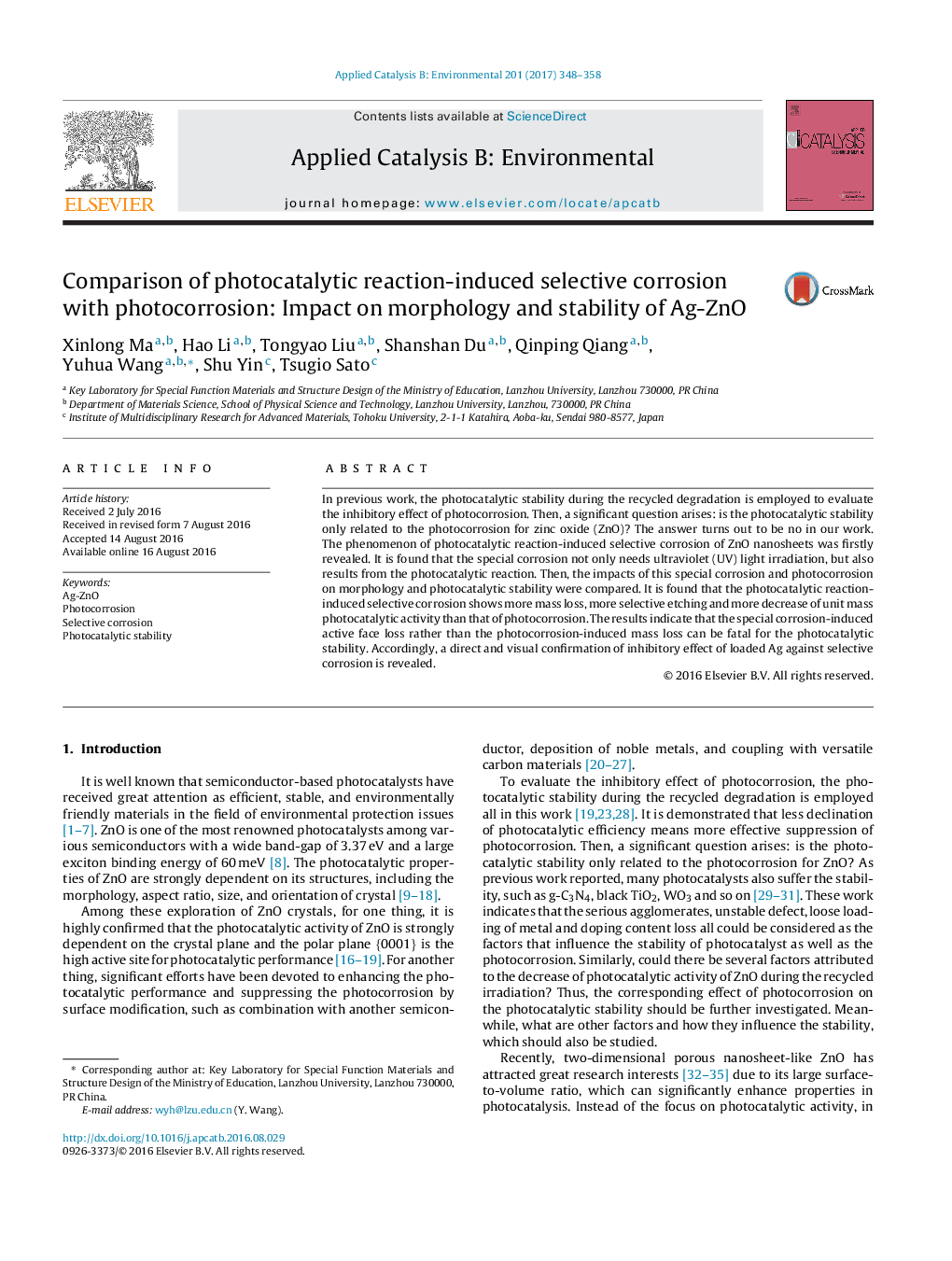| Article ID | Journal | Published Year | Pages | File Type |
|---|---|---|---|---|
| 6455020 | Applied Catalysis B: Environmental | 2017 | 11 Pages |
•The phenomenon of photocatalytic reaction-induced selective corrosion of ZnO nanosheets was firstly revealed.•The impacts of this special corrosion and photocorrosion on morphology and photocatalytic stability were compared.•The special corrosion-induced active face loss turns out to be fatal for the photocatalytic stability.•A direct and visual confirmation of inhibitory effect of loaded Ag against selective corrosion is revealed.
In previous work, the photocatalytic stability during the recycled degradation is employed to evaluate the inhibitory effect of photocorrosion. Then, a significant question arises: is the photocatalytic stability only related to the photocorrosion for zinc oxide (ZnO)? The answer turns out to be no in our work. The phenomenon of photocatalytic reaction-induced selective corrosion of ZnO nanosheets was firstly revealed. It is found that the special corrosion not only needs ultraviolet (UV) light irradiation, but also results from the photocatalytic reaction. Then, the impacts of this special corrosion and photocorrosion on morphology and photocatalytic stability were compared. It is found that the photocatalytic reaction-induced selective corrosion shows more mass loss, more selective etching and more decrease of unit mass photocatalytic activity than that of photocorrosion. The results indicate that the special corrosion-induced active face loss rather than the photocorrosion-induced mass loss can be fatal for the photocatalytic stability. Accordingly, a direct and visual confirmation of inhibitory effect of loaded Ag against selective corrosion is revealed.
Graphical abstractFigure optionsDownload full-size imageDownload high-quality image (242 K)Download as PowerPoint slide
